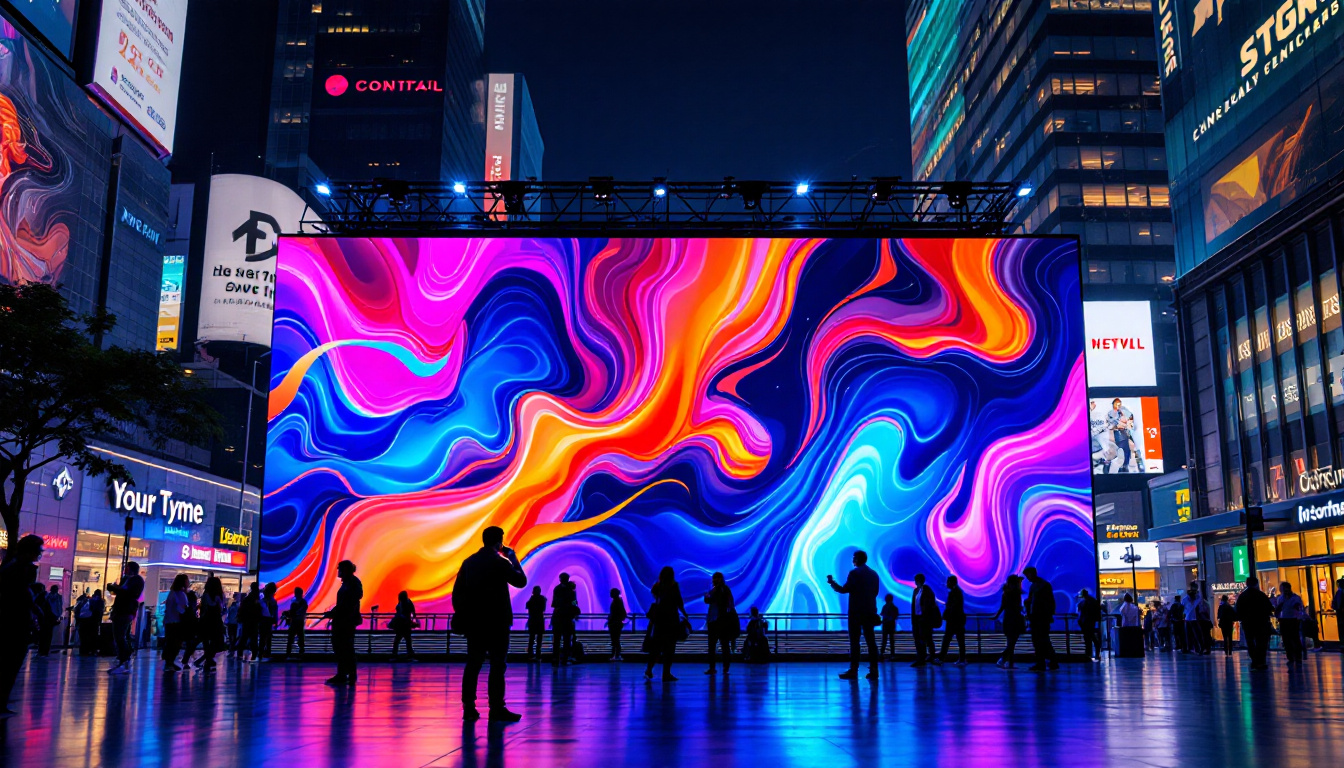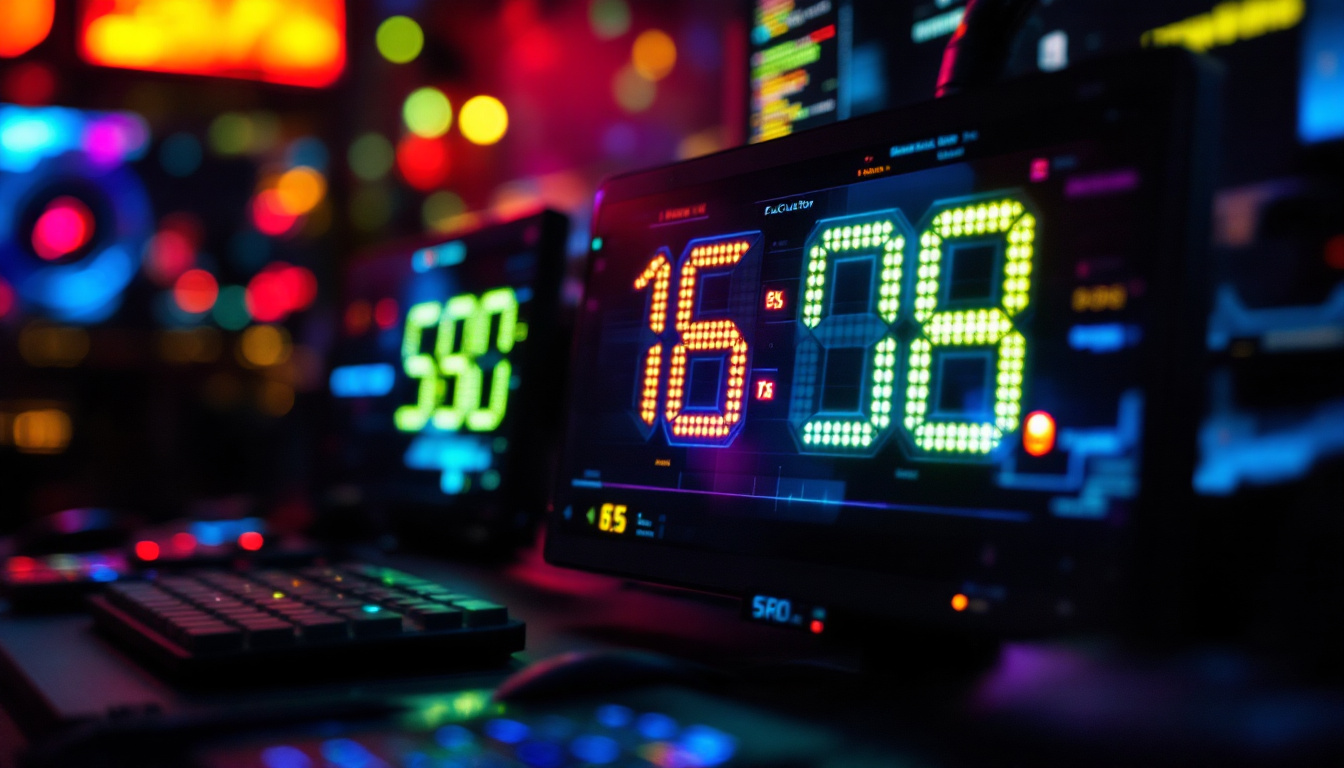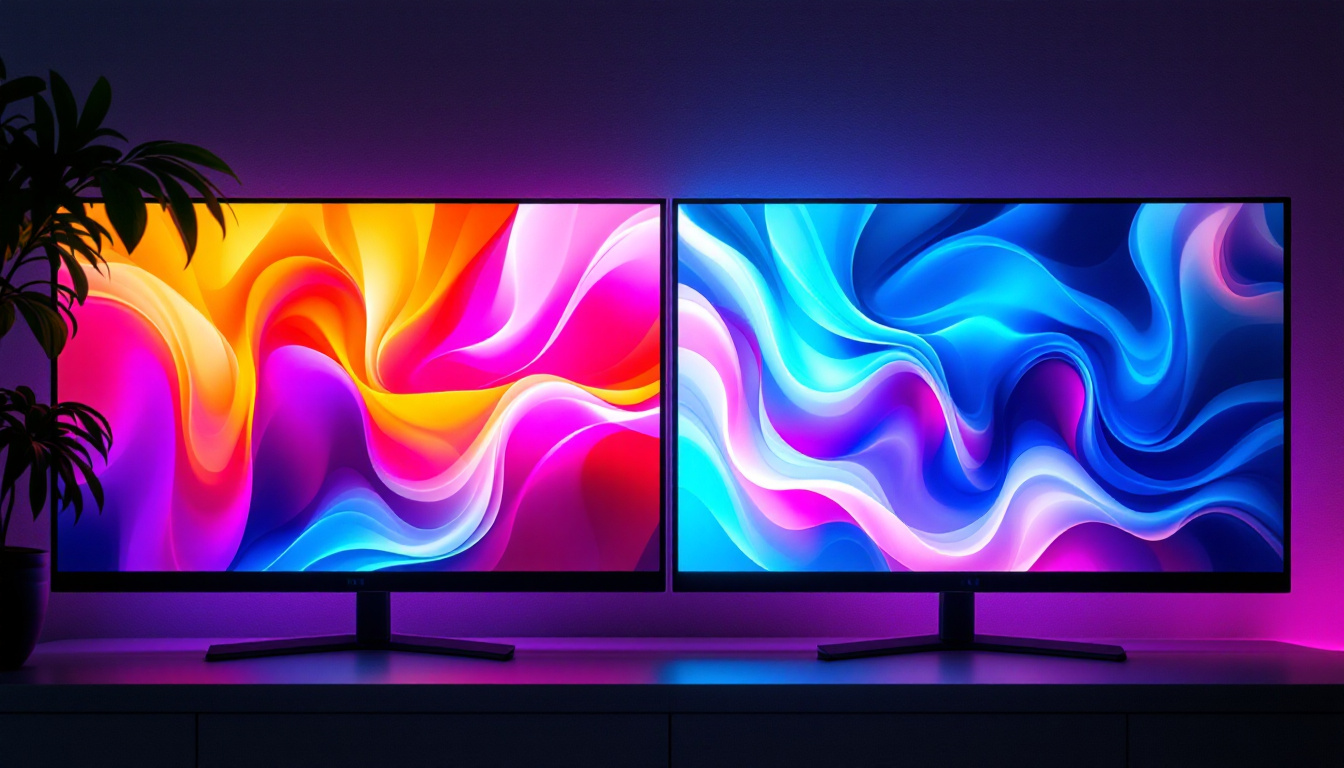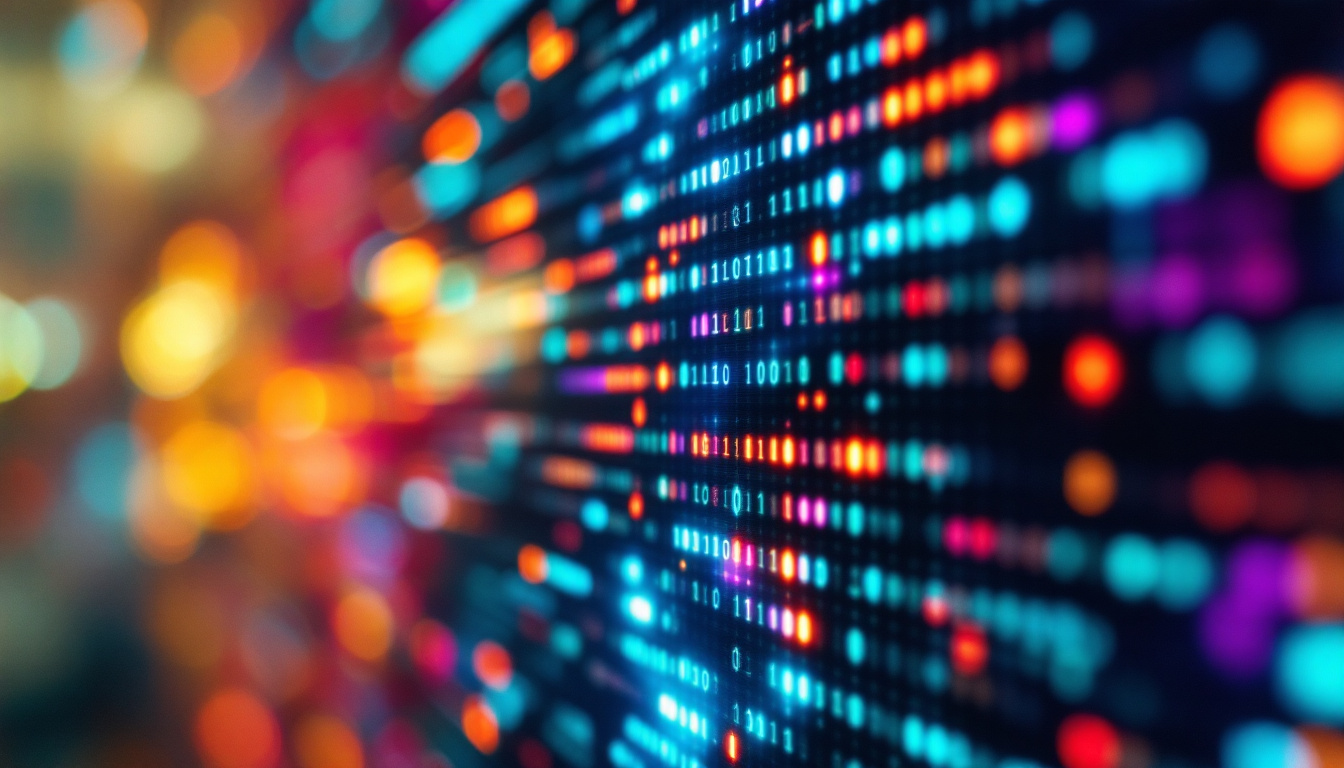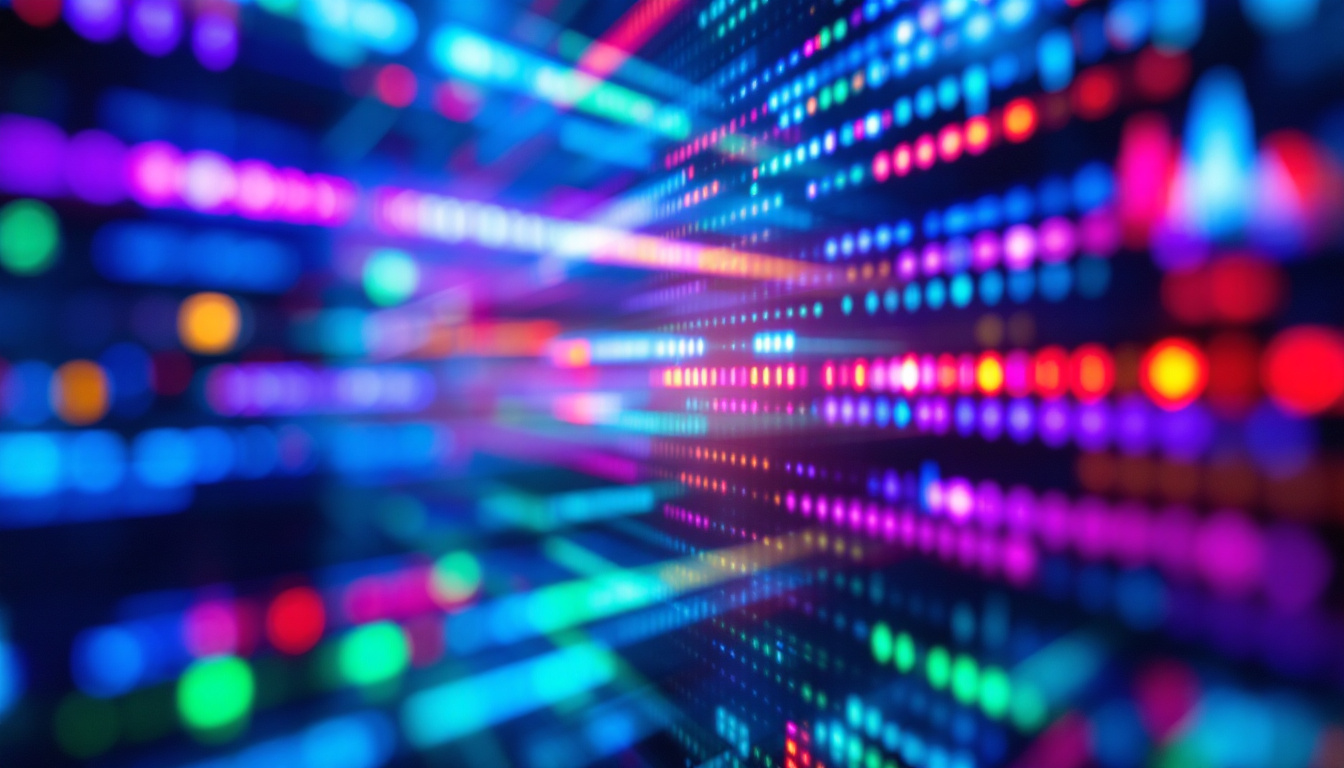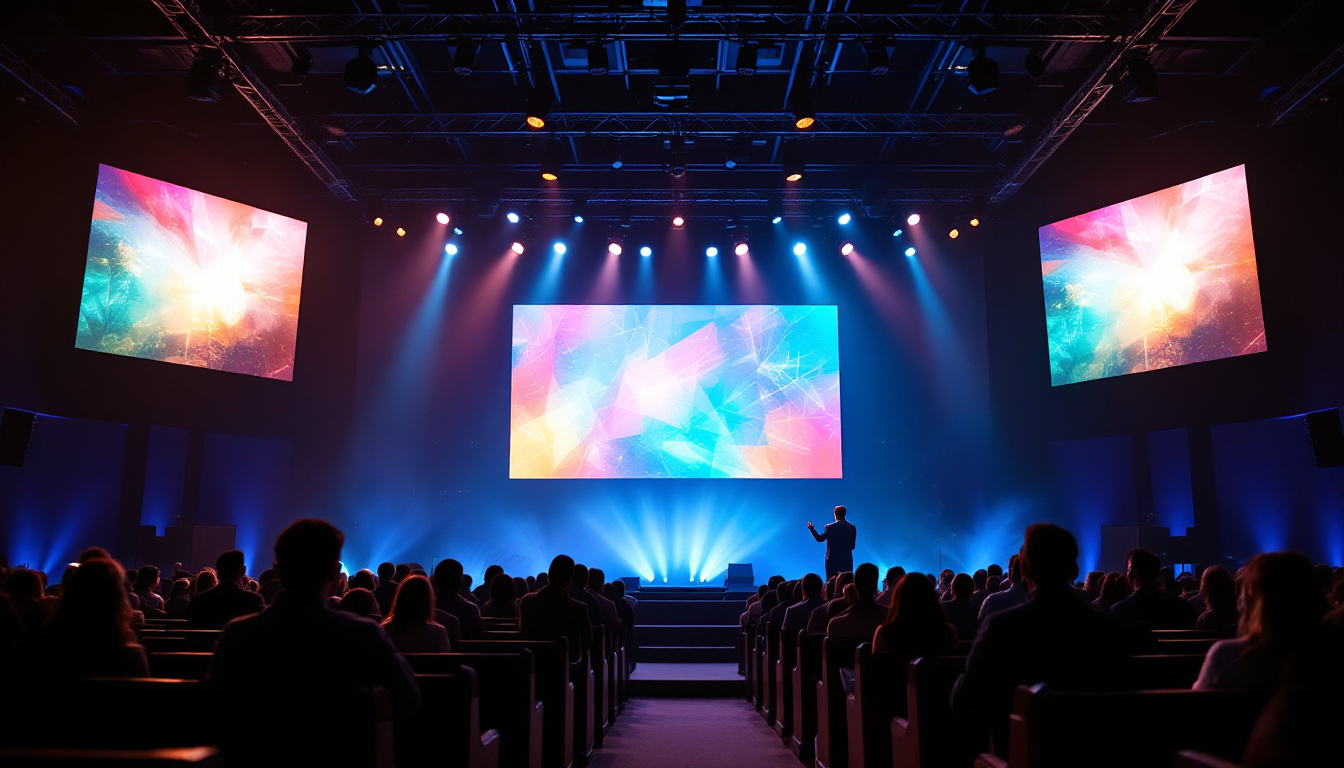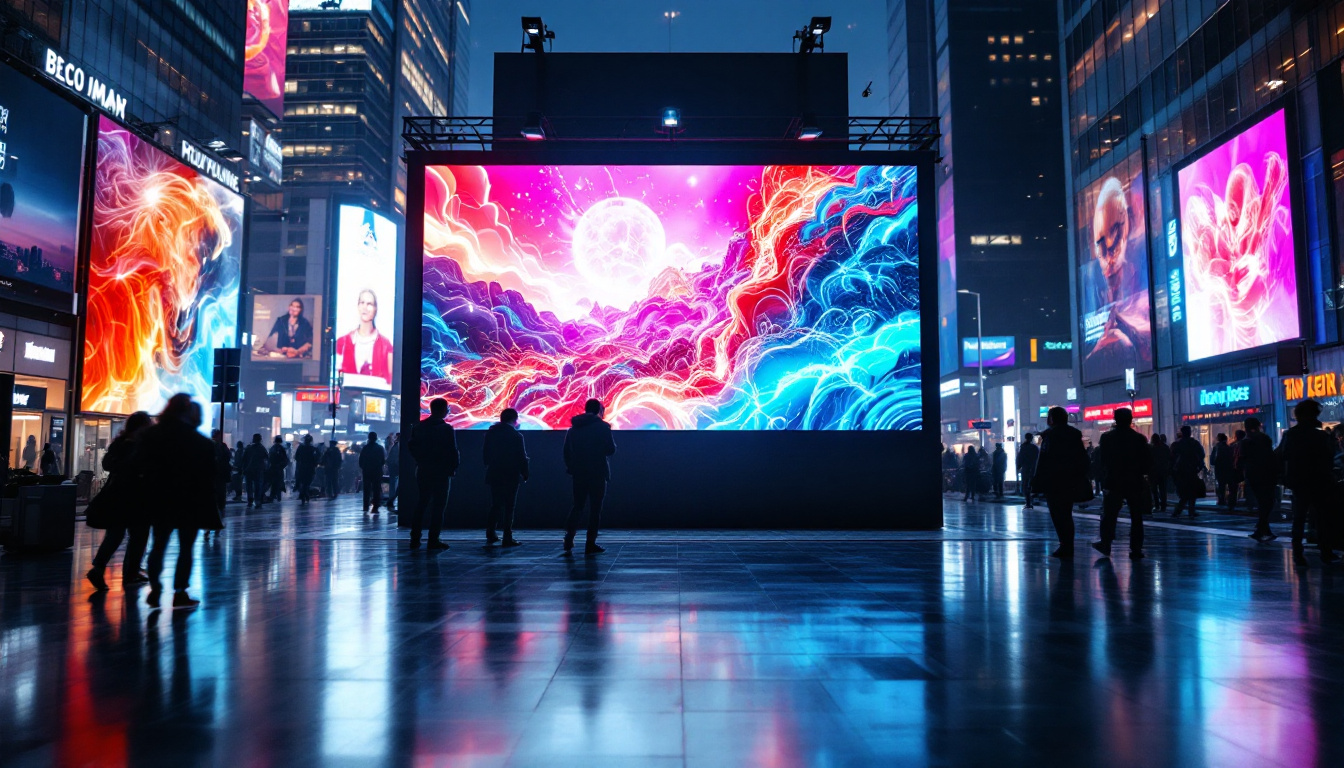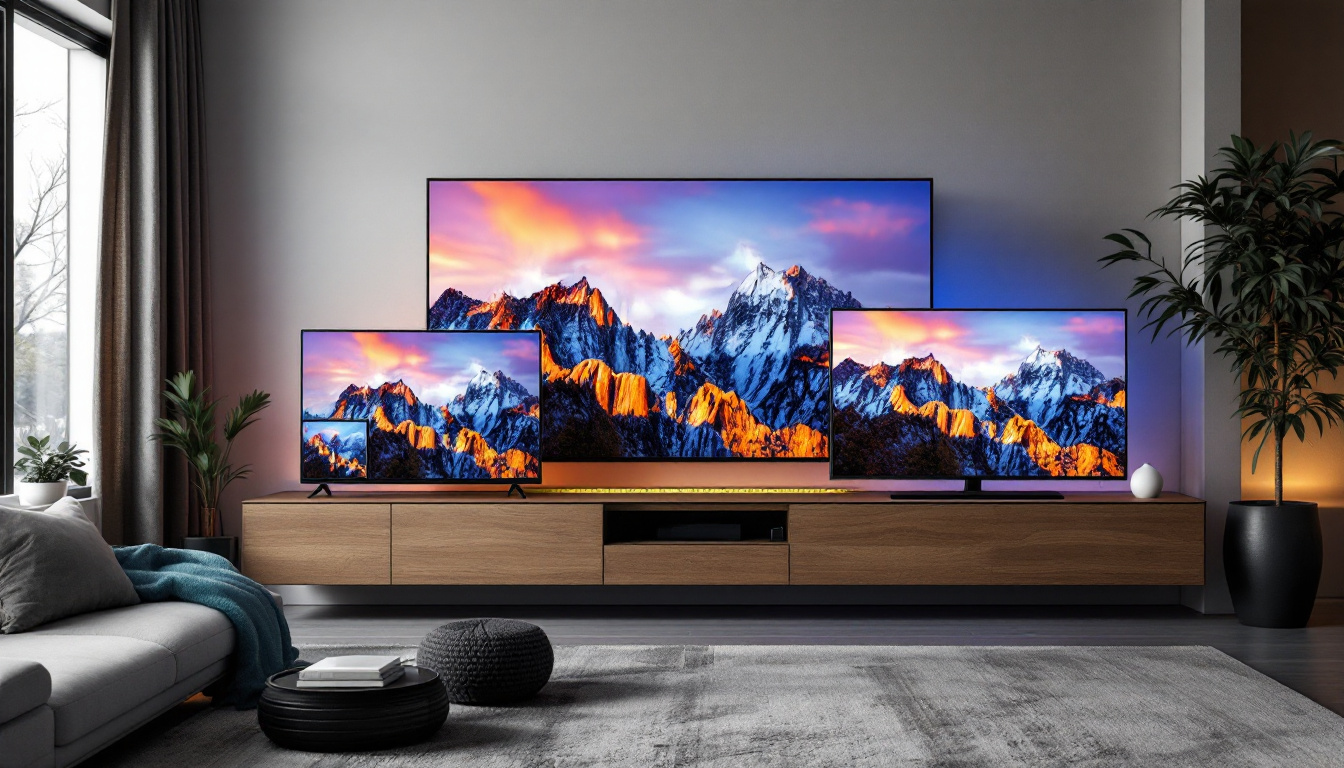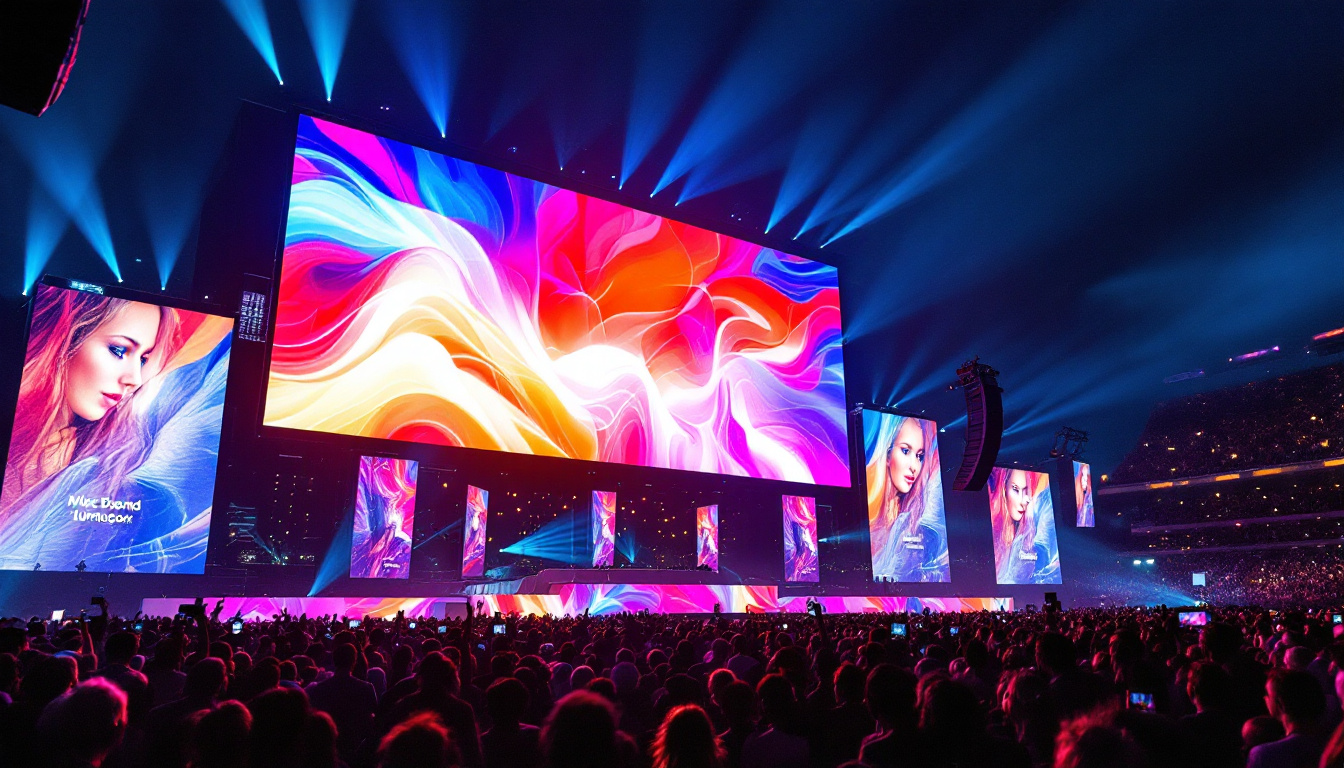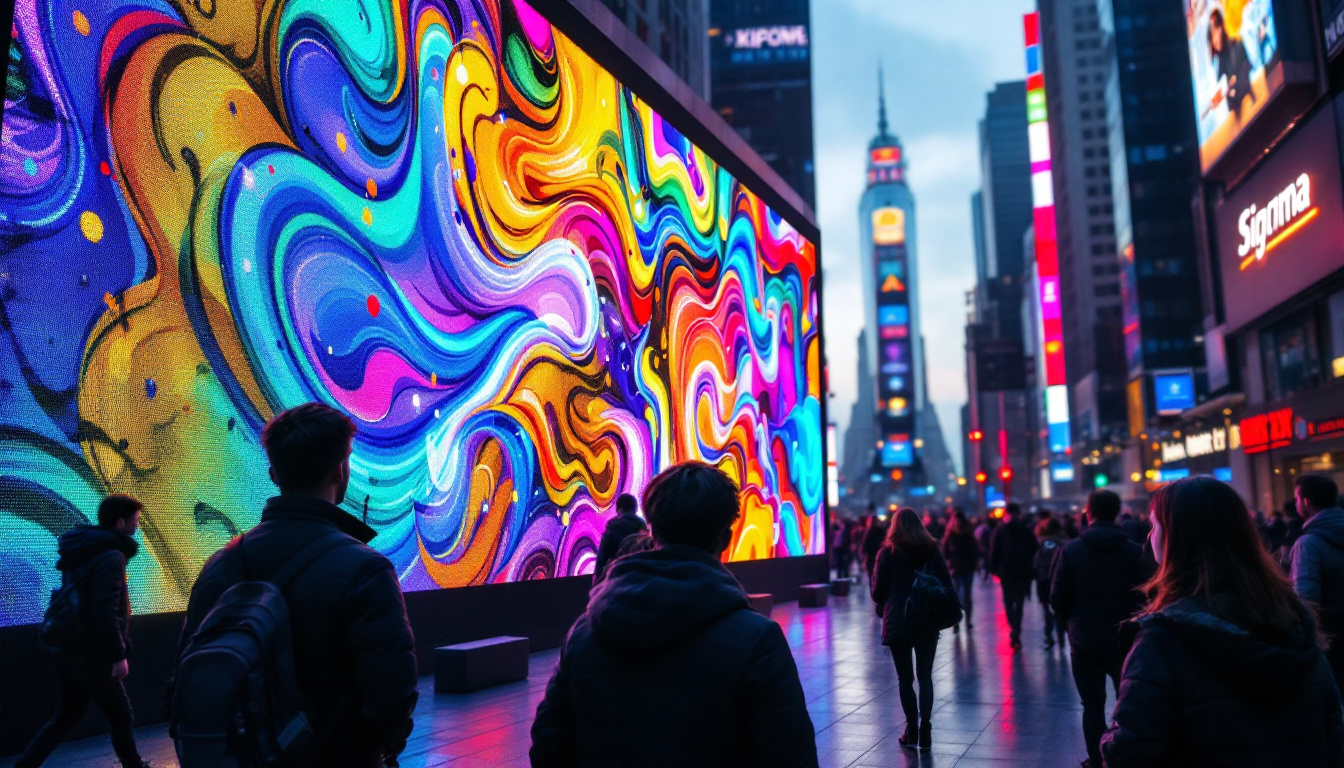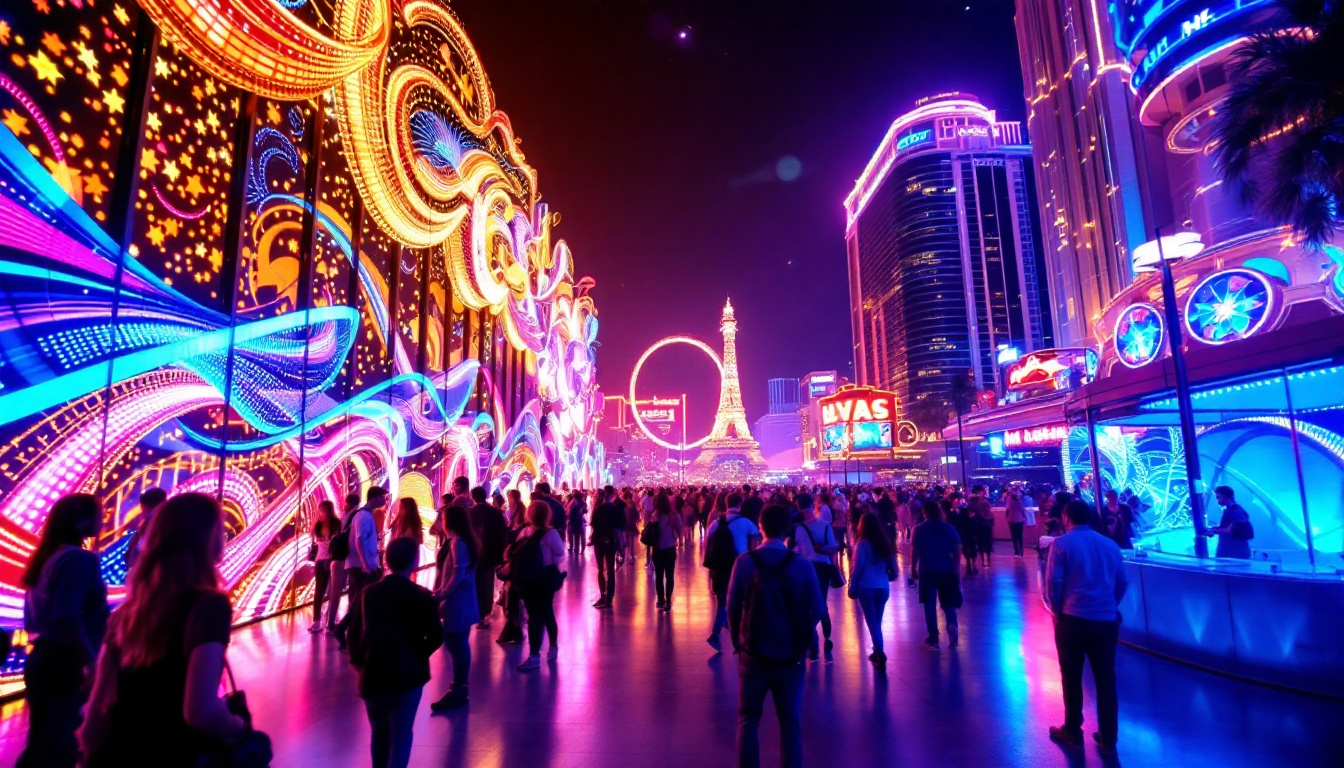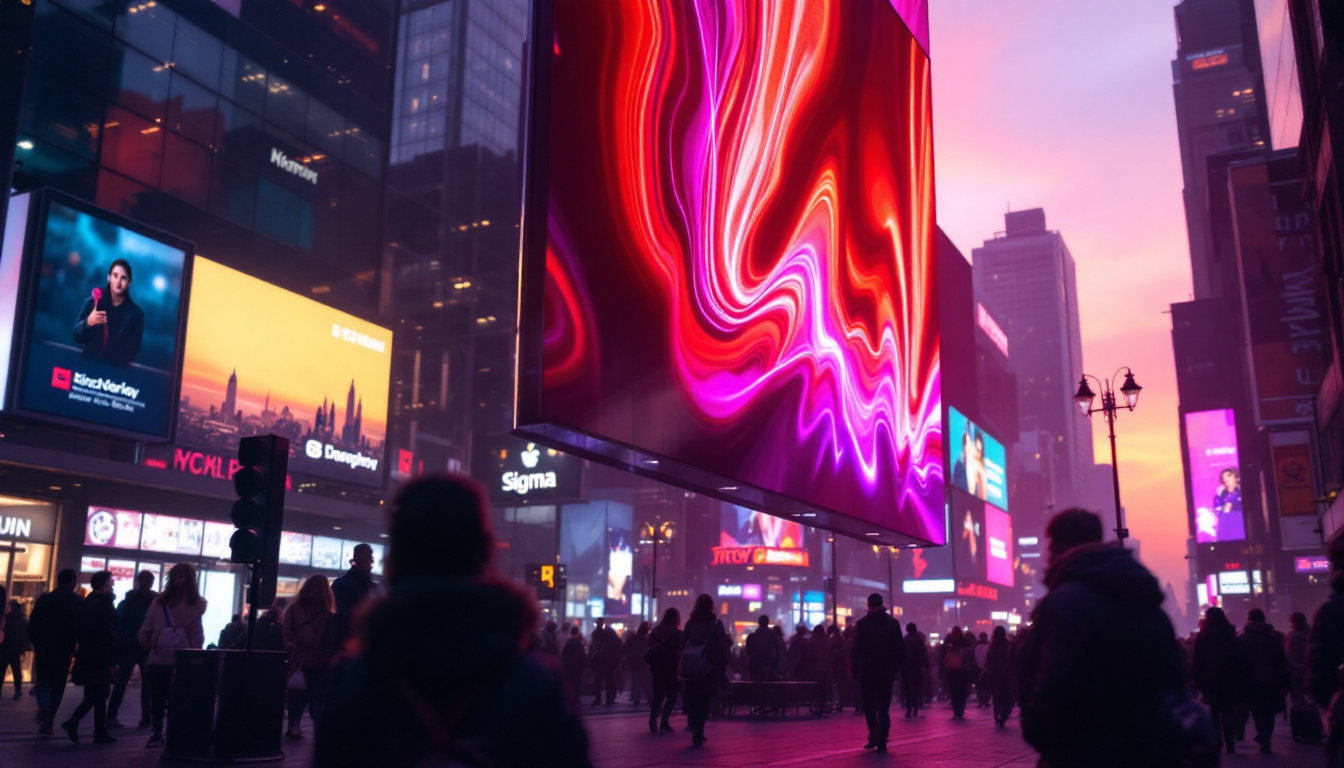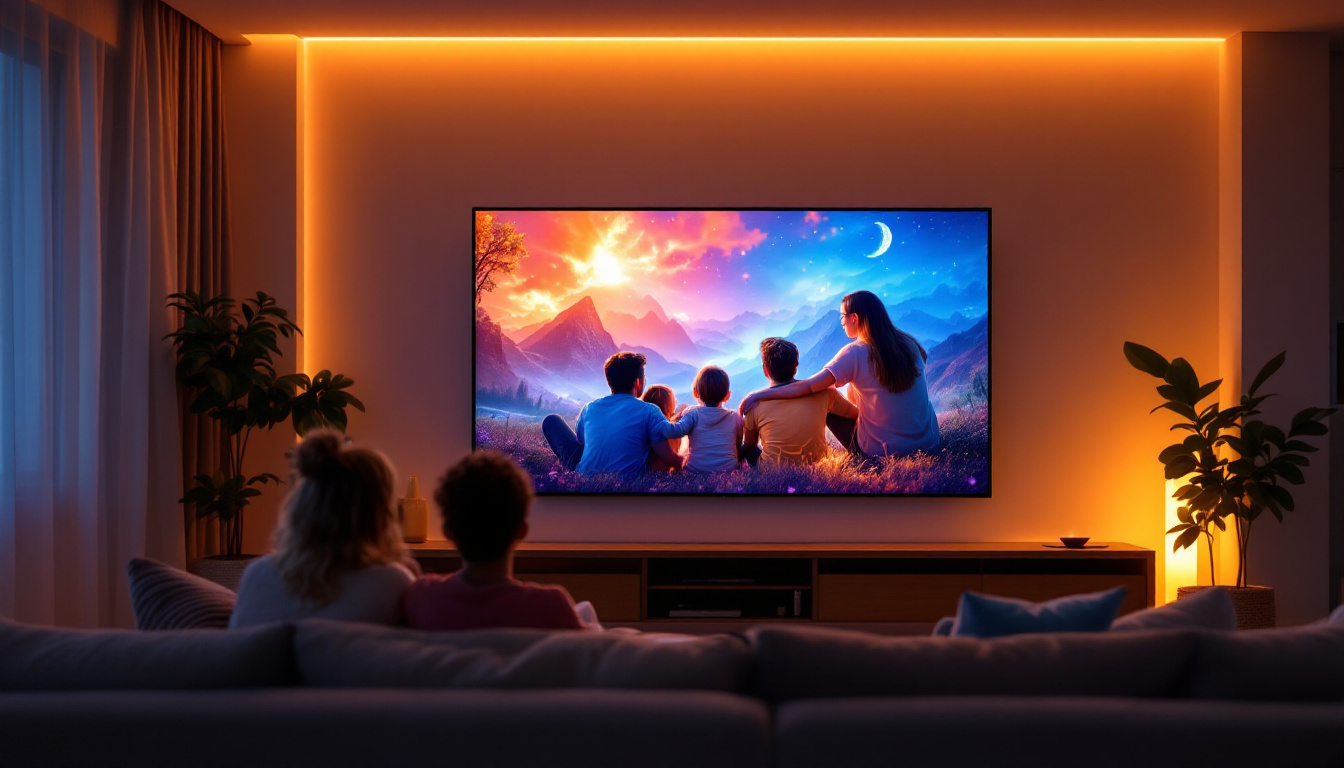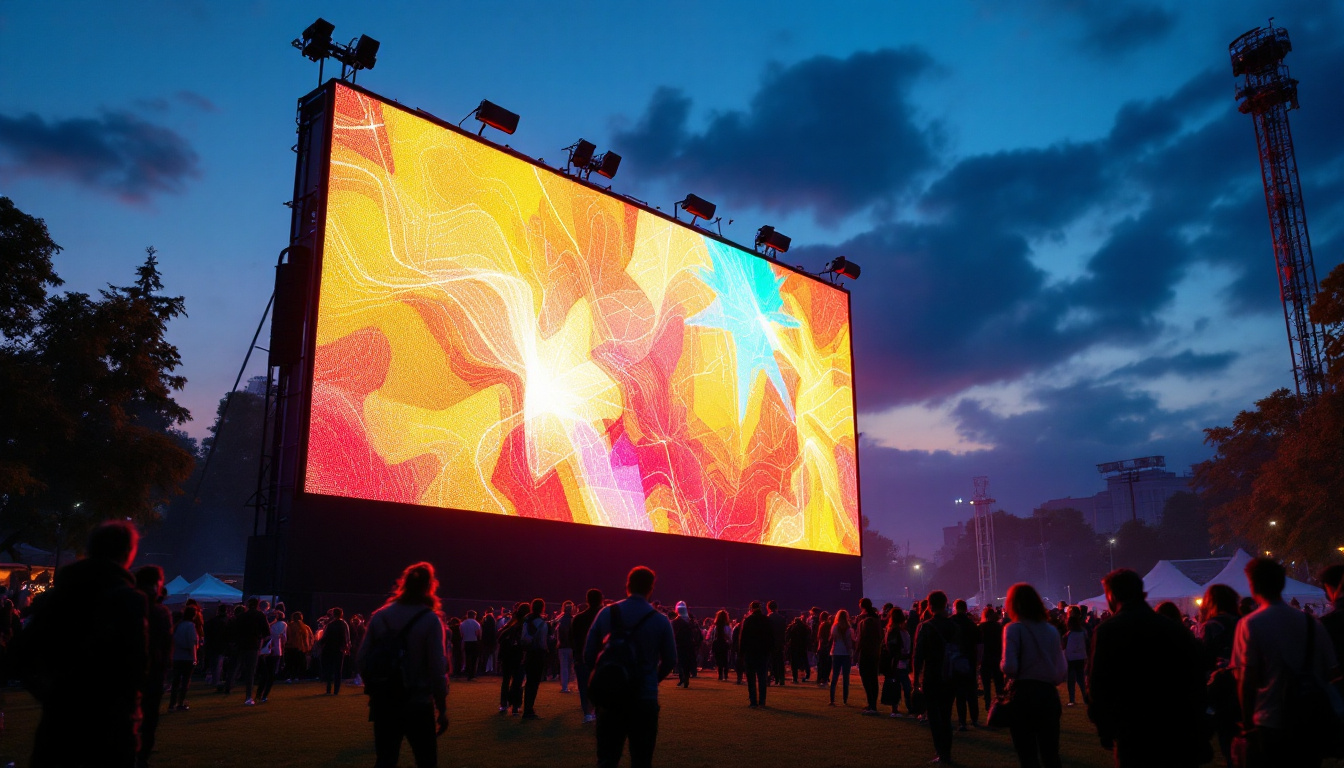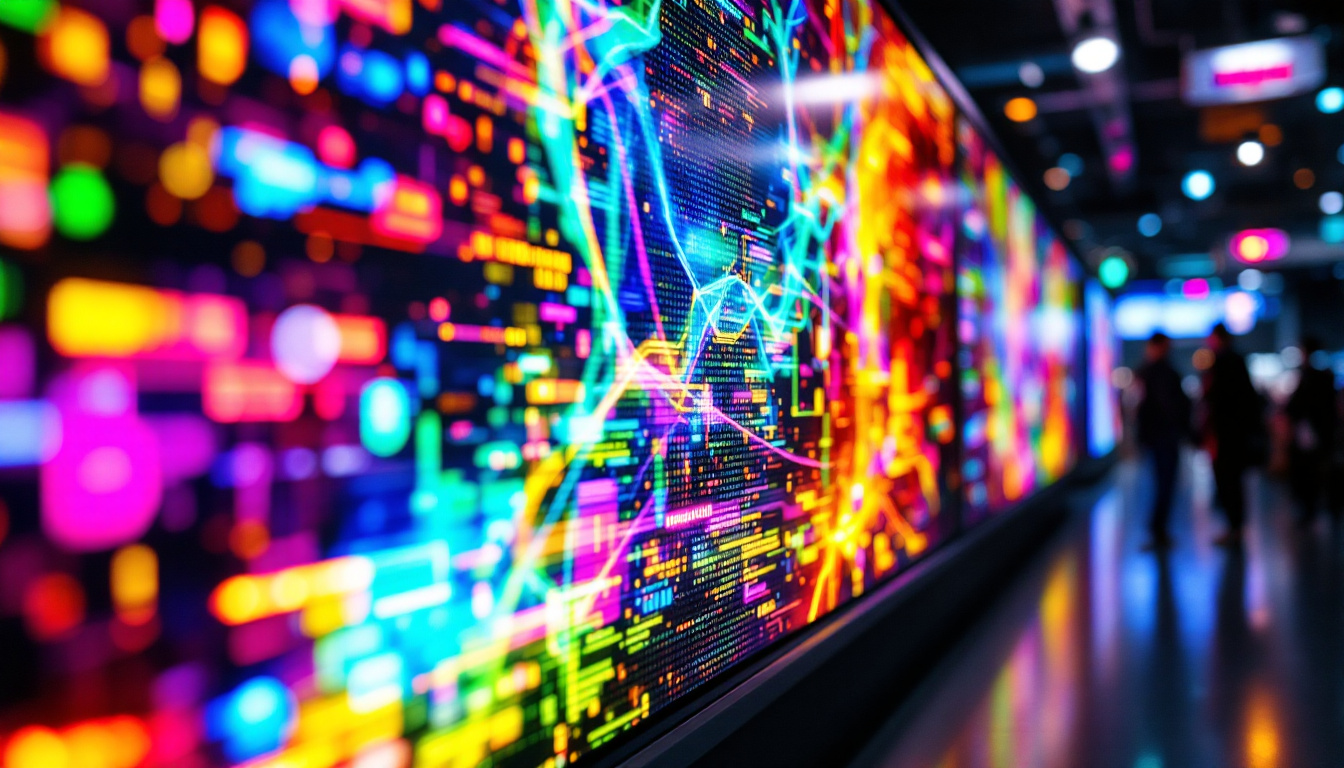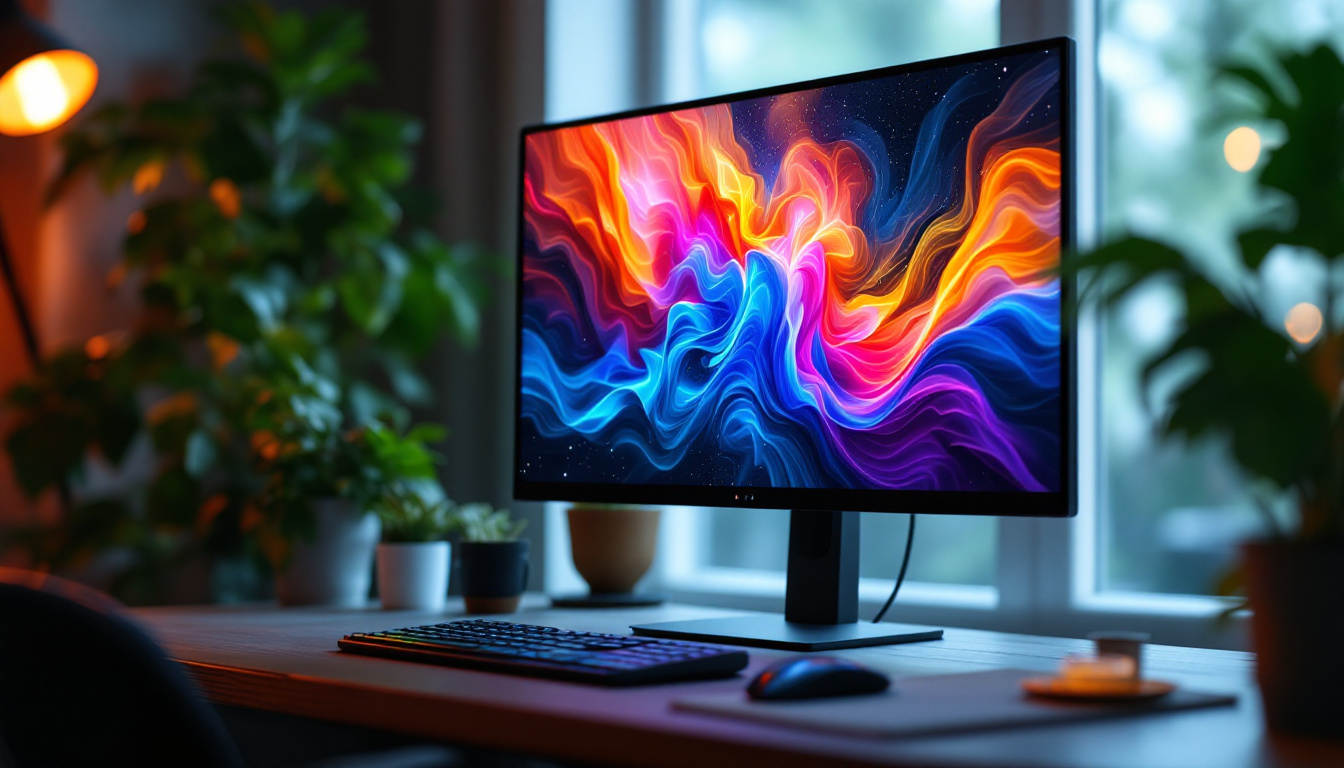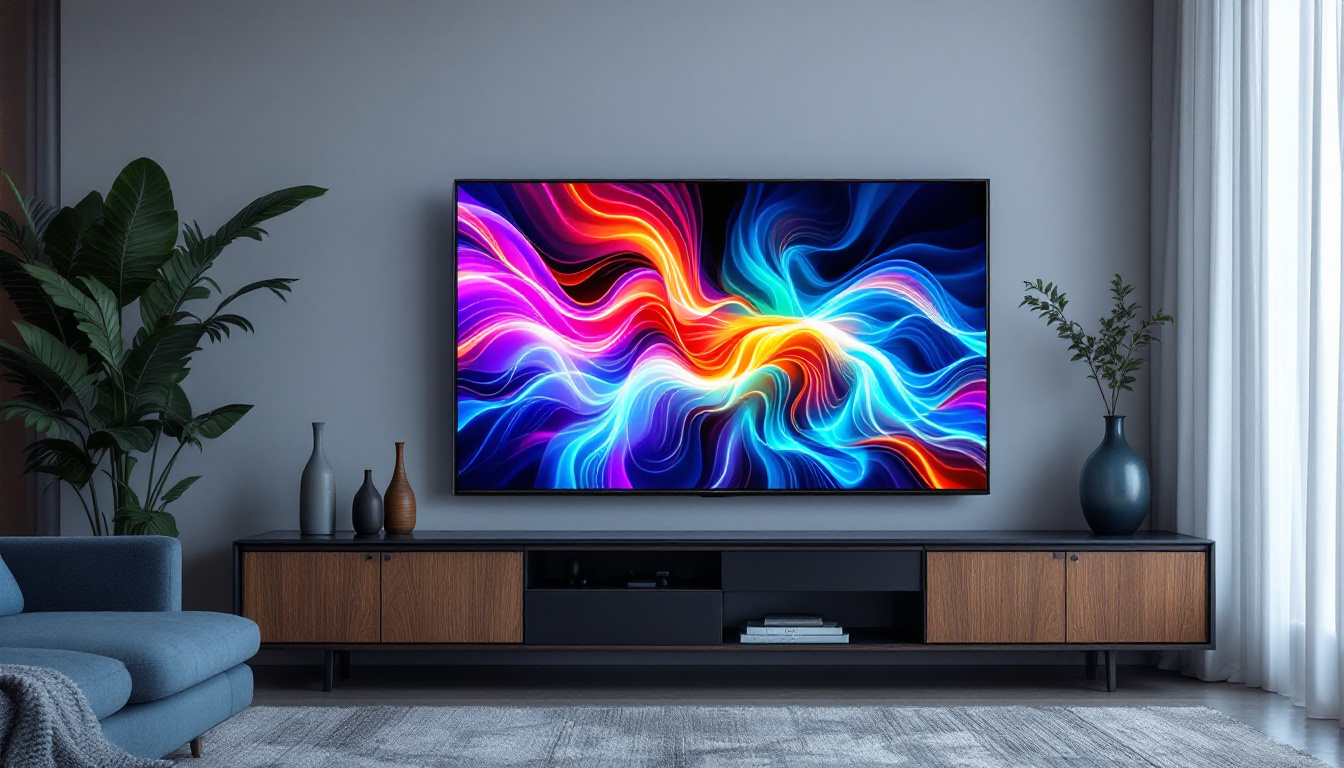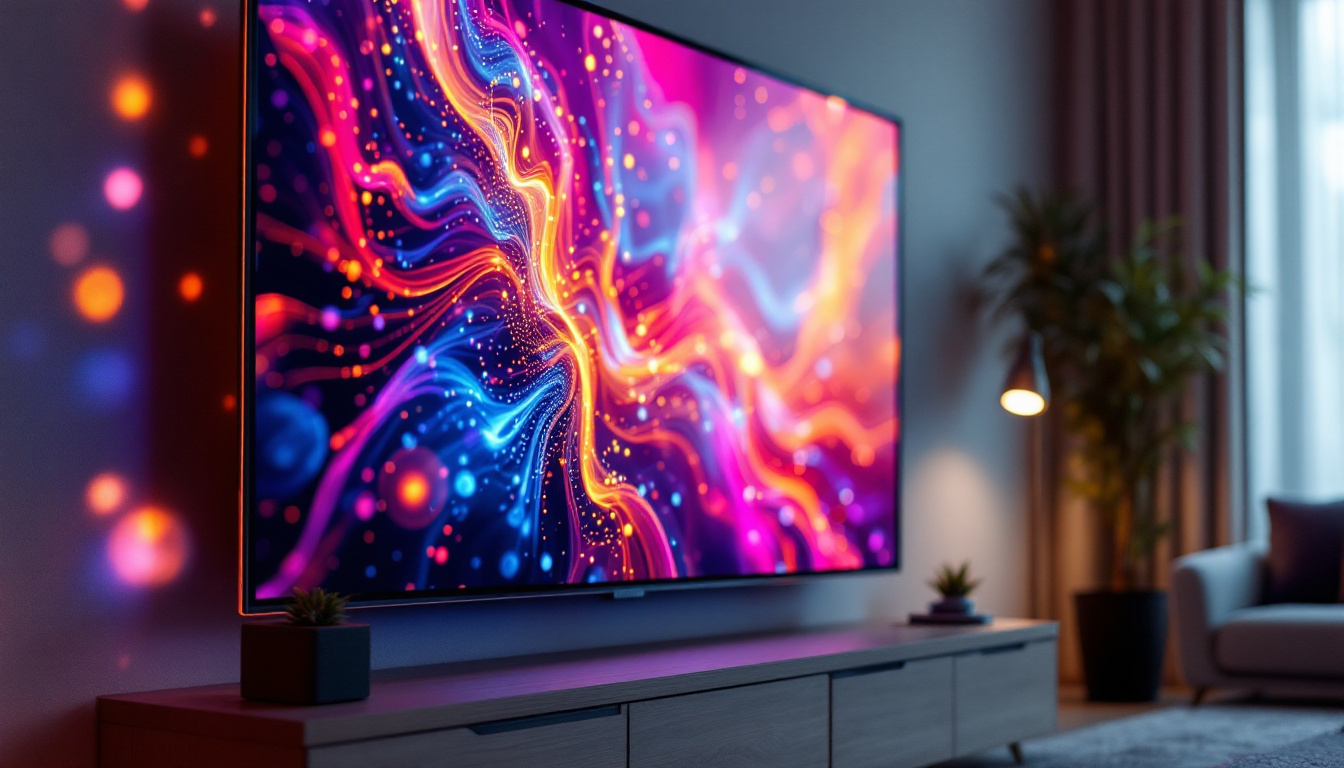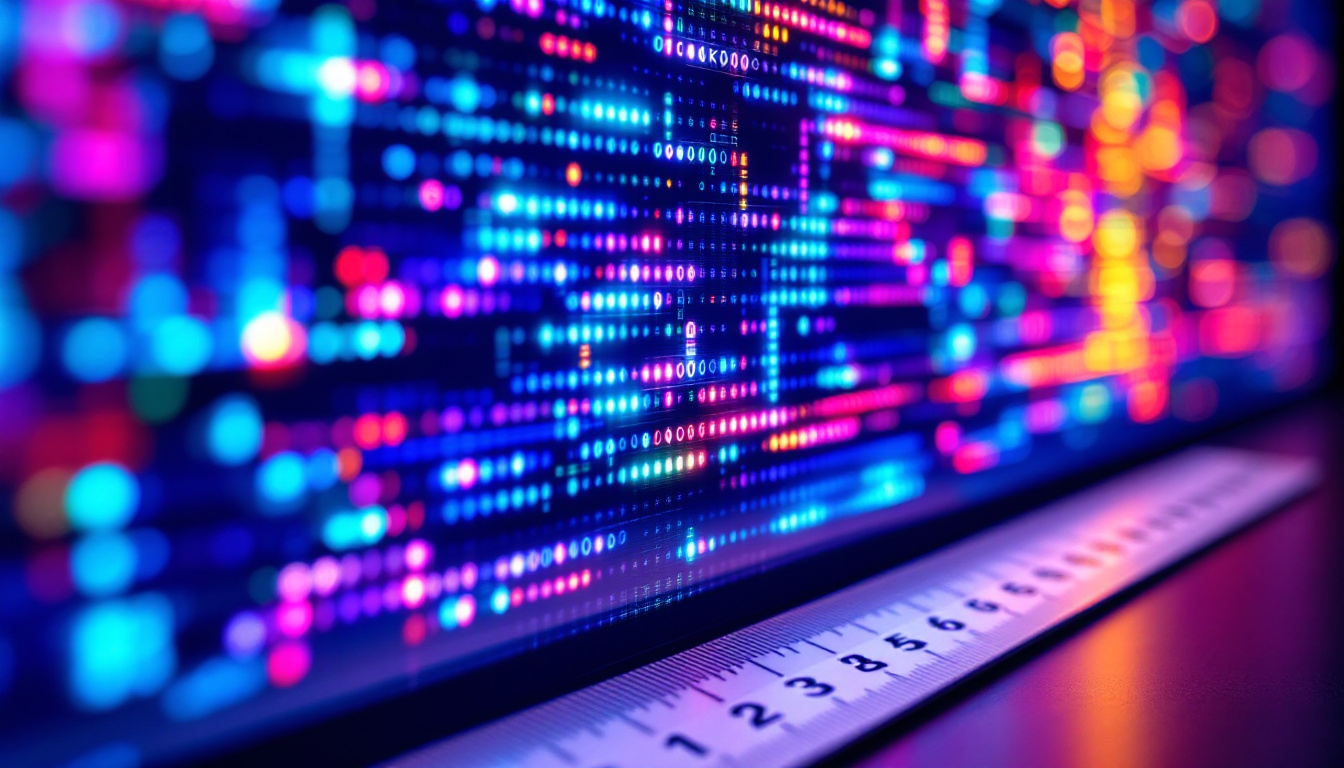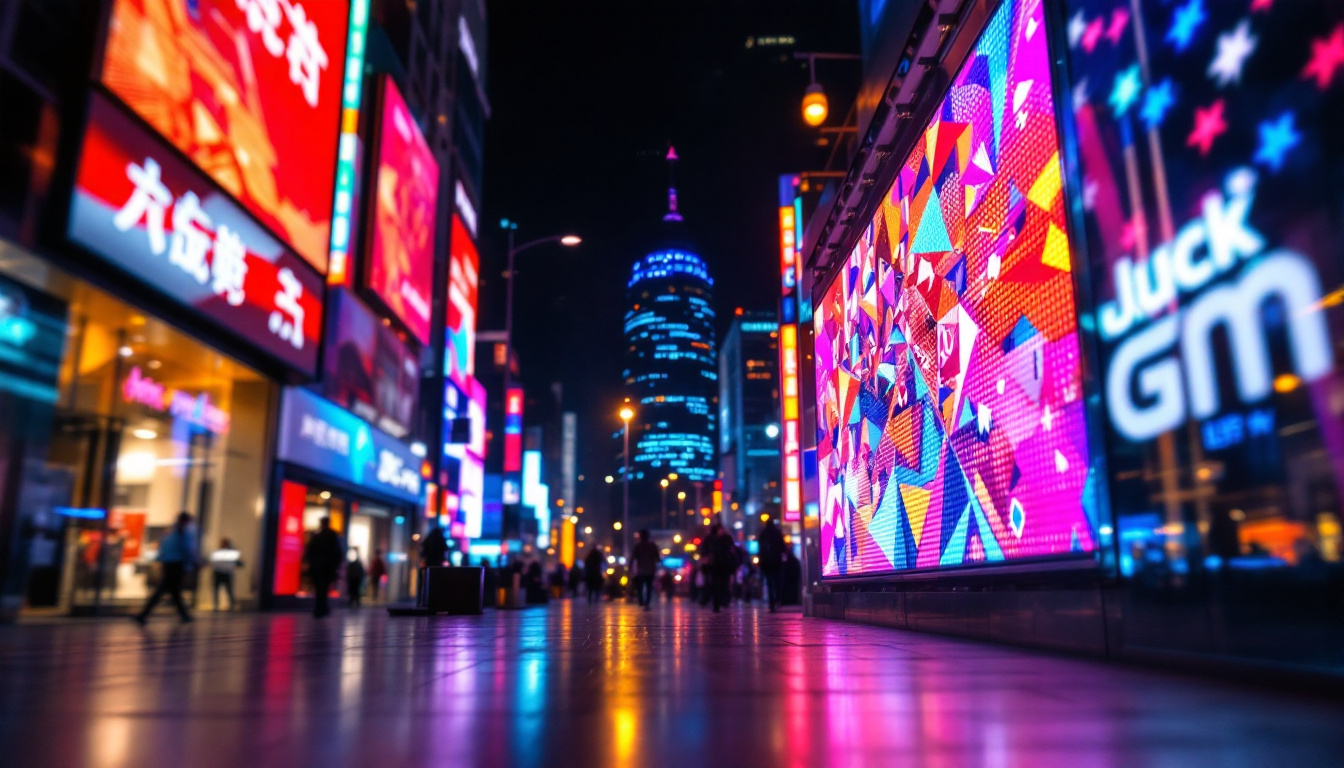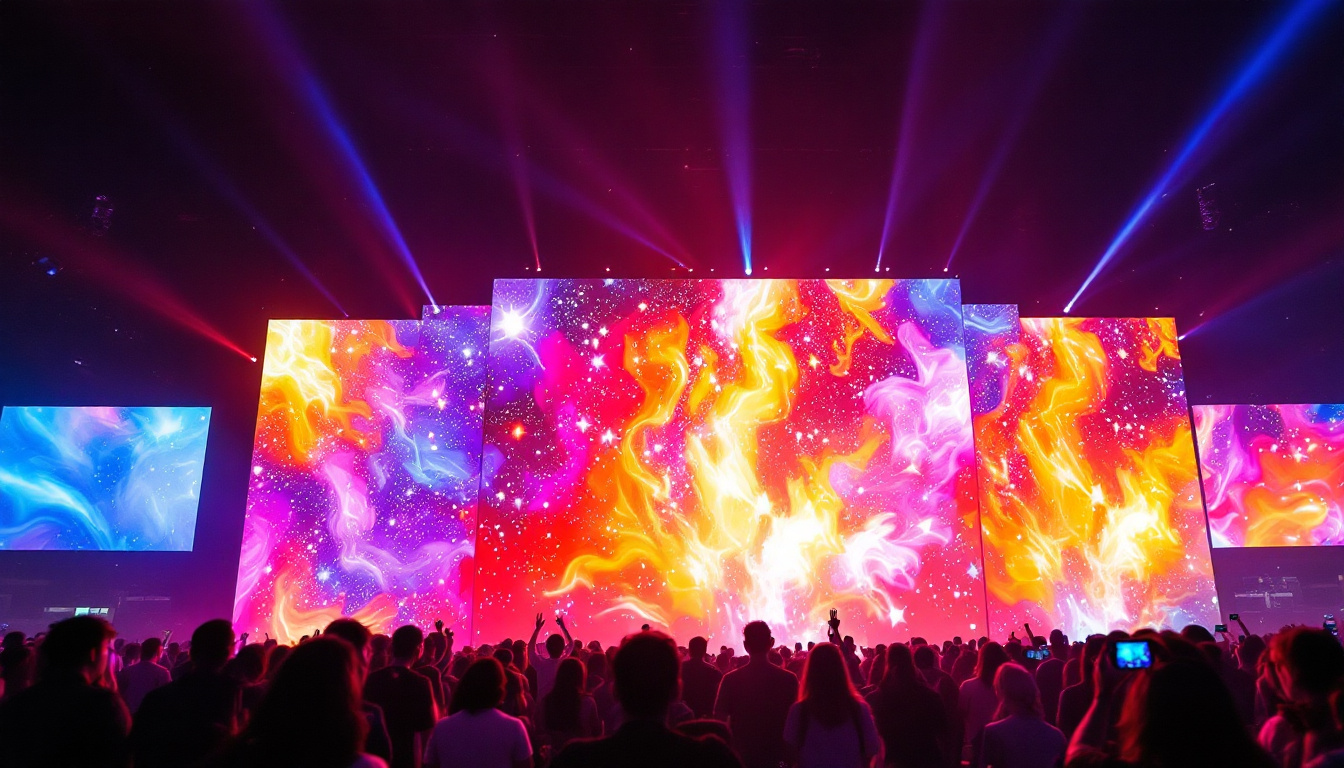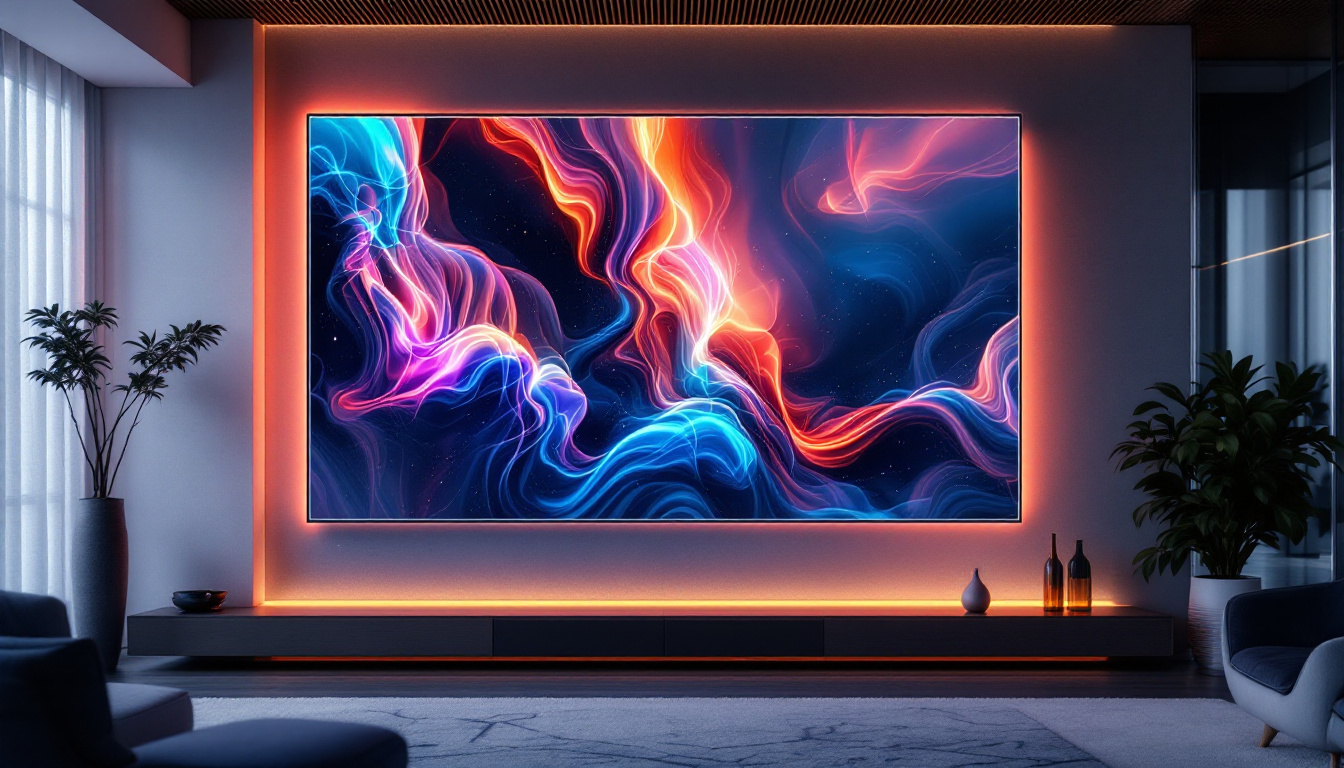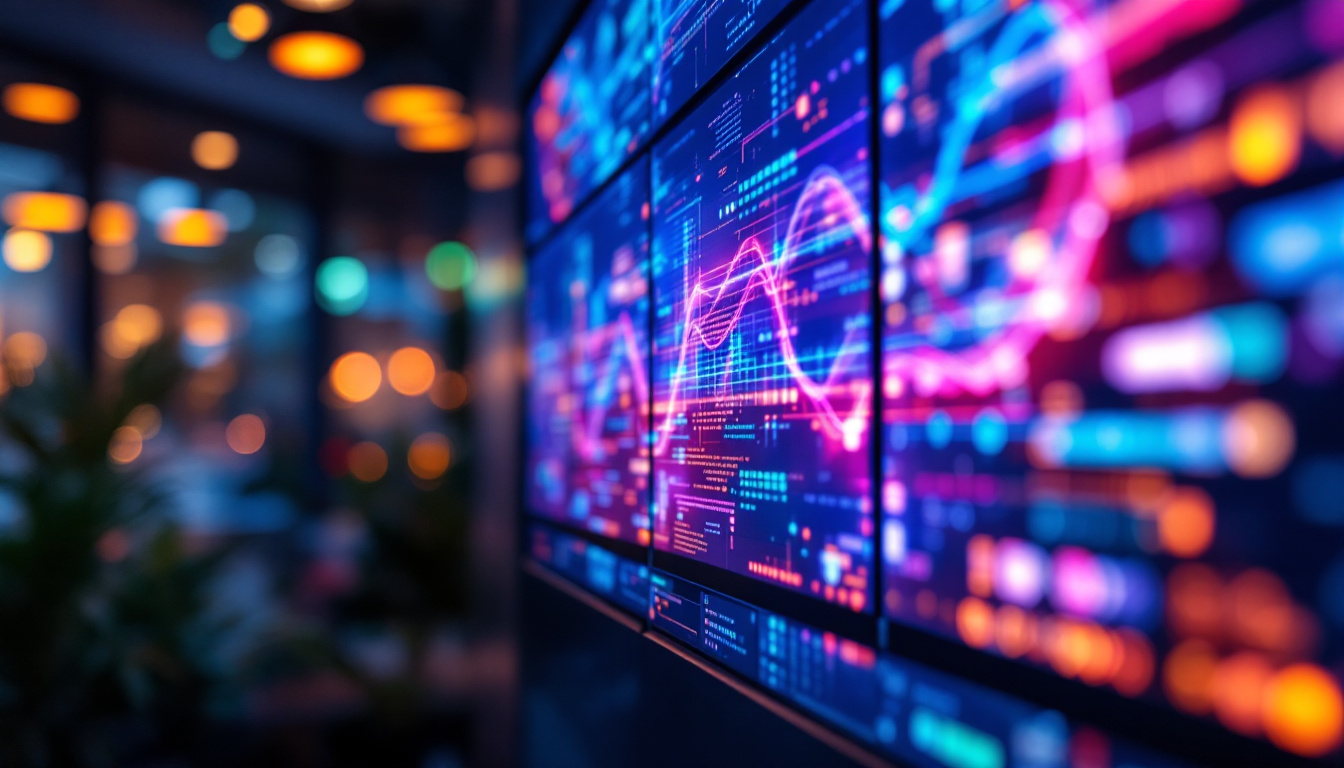In recent years, LED displays have become a ubiquitous part of our daily lives, gracing everything from smartphones to large advertising billboards. Among these, the 24-inch LED screen stands out for its versatility and practicality. This article delves into the intricacies of LED technology, its applications, and the benefits it offers in various settings.
Understanding LED Technology
LED, or Light Emitting Diode, is a semiconductor device that emits light when an electric current passes through it. This technology has revolutionized the display industry, providing brighter, more energy-efficient alternatives to traditional LCD screens. At the core of LED displays is the ability to produce vibrant colors and deep contrasts, making them ideal for a wide range of applications. The efficiency of LEDs also contributes to lower energy consumption, which is not only beneficial for the environment but also results in significant cost savings for consumers and businesses alike.
The Basics of LED Displays
LED displays consist of numerous tiny diodes that work together to create images and videos. Each pixel in an LED display is made up of red, green, and blue (RGB) diodes, which combine to produce a full spectrum of colors. This pixel-based structure allows for high-resolution images that are sharp and clear, even from a distance. The precision with which these diodes can be controlled enables advanced features such as dynamic contrast adjustment and local dimming, enhancing the overall viewing experience.
One of the key advantages of LED technology is its ability to achieve high brightness levels. This makes LED displays suitable for outdoor environments where sunlight can wash out the visibility of other types of screens. Additionally, LED displays are known for their longevity, often lasting tens of thousands of hours before needing replacement. This durability is complemented by their resistance to shock and vibration, making them ideal for use in various settings, from bustling urban centers to remote outdoor events.
Types of LED Displays
There are several types of LED displays, each designed for specific applications. The most common types include:
- Direct View LED: These displays are made up of individual LED modules that form a larger screen. They are often used for large outdoor billboards and video walls, providing eye-catching visuals that can be seen from great distances. The modular design allows for easy repairs and upgrades, making them a popular choice for advertisers and event organizers.
- LED-backlit LCD: In this configuration, an LCD screen is illuminated from behind by LEDs. This is commonly found in televisions and computer monitors, where the combination of LCD technology and LED backlighting enhances color accuracy and contrast ratios. The thin profile of these displays also allows for sleek designs that fit seamlessly into modern living spaces.
- Organic LED (OLED): OLED displays use organic compounds to emit light, allowing for thinner screens and better color accuracy. They are often used in high-end televisions and smartphones. The self-emissive nature of OLED technology means that each pixel can turn on and off independently, resulting in true blacks and an impressive range of colors that captivate viewers.
Moreover, the versatility of LED technology extends beyond displays. It is also widely used in general lighting applications, automotive lighting, and even in horticulture for growing plants indoors. The ability to create specific light spectrums makes LEDs an excellent choice for promoting plant growth, leading to innovative solutions in urban farming and greenhouse environments. As technology continues to advance, the potential applications for LED technology seem limitless, paving the way for a brighter and more efficient future.
The Advantages of 24-Inch LED Displays
The 24-inch LED display has gained popularity across various sectors, including education, business, and entertainment. Its size strikes a balance between portability and usability, making it an ideal choice for numerous applications.
Versatility in Applications
One of the primary advantages of a 24-inch LED display is its versatility. In educational settings, these screens can be used for presentations, interactive lessons, and collaborative projects. They provide teachers and students with a clear and vibrant medium to share information effectively.
In the business world, a 24-inch LED display can serve multiple purposes, from displaying data and analytics to facilitating video conferencing. Its compact size makes it suitable for office desks, reception areas, and meeting rooms, enhancing productivity and communication.
Enhanced Viewing Experience
The viewing experience offered by a 24-inch LED display is superior to many traditional screens. With high resolution and vibrant colors, users can enjoy crisp images whether they are watching a movie, playing video games, or working on detailed design projects. The wide viewing angles of LED technology ensure that everyone in the room can enjoy the content without distortion.
Moreover, many 24-inch LED displays come equipped with features such as anti-glare coatings and adjustable brightness settings, further enhancing the viewing experience in various lighting conditions.
Technical Specifications to Consider
When selecting a 24-inch LED display, understanding the technical specifications is crucial for making an informed decision. Key specifications include resolution, refresh rate, and connectivity options.
Resolution Matters
Resolution is one of the most critical factors affecting image quality. Common resolutions for 24-inch LED displays include Full HD (1920 x 1080) and 4K (3840 x 2160). While Full HD is sufficient for most everyday tasks, 4K resolution provides a significantly sharper image, which is particularly beneficial for graphic design and video editing.
Higher resolutions allow for more detail and clarity, making them preferable for professional use. However, it is essential to ensure that the content being viewed is also available in high resolution to fully utilize the display’s capabilities.
Refresh Rate and Response Time
The refresh rate, measured in hertz (Hz), indicates how many times the display updates per second. A higher refresh rate results in smoother motion, which is particularly important for gaming and fast-paced video content. Most 24-inch LED displays offer refresh rates of 60Hz, but some models designed for gaming may go up to 144Hz or higher.
Response time, measured in milliseconds (ms), refers to how quickly a pixel can change from one color to another. A lower response time reduces motion blur and ghosting effects, enhancing the overall viewing experience during fast-moving scenes.
Connectivity Options
Modern 24-inch LED displays come equipped with various connectivity options to accommodate different devices. Common ports include HDMI, DisplayPort, USB-C, and VGA. The availability of multiple ports allows users to connect laptops, gaming consoles, and other devices seamlessly.
HDMI and DisplayPort
HDMI (High-Definition Multimedia Interface) is the most widely used connection type for high-definition video and audio. It is compatible with a wide range of devices, making it a versatile choice for both home and office environments. DisplayPort, on the other hand, is often favored for its higher bandwidth capabilities, making it suitable for high-resolution displays and multiple monitor setups.
USB-C and VGA
USB-C has gained popularity due to its ability to transmit both power and data through a single cable. This is particularly useful for laptops that support USB-C charging. VGA (Video Graphics Array) is an older connection type that is still found on some legacy devices. While it is less common in modern displays, it may still be necessary for certain applications.
Energy Efficiency and Environmental Impact
As the world becomes more conscious of energy consumption and environmental impact, LED displays are often celebrated for their energy efficiency. Compared to traditional LCD and CRT displays, LED technology consumes significantly less power, making it an eco-friendly choice.
Longevity and Sustainability
LED displays are designed to last longer than their counterparts, with lifespans often exceeding 50,000 hours. This longevity not only reduces the frequency of replacements but also minimizes electronic waste. Furthermore, many manufacturers are now focusing on sustainable production practices, ensuring that their products are made with recyclable materials.
Energy-Saving Features
Many modern LED displays come equipped with energy-saving features such as automatic brightness adjustment and power-saving modes. These features help reduce energy consumption during periods of inactivity or low ambient light, further enhancing their sustainability.
Choosing the Right 24-Inch LED Display
With the plethora of options available in the market, selecting the right 24-inch LED display can be daunting. However, considering specific needs and preferences can simplify the decision-making process.
Assessing Your Needs
Before making a purchase, it is essential to assess the primary use of the display. For gaming enthusiasts, a model with a high refresh rate and low response time will be crucial. Conversely, for professional use such as graphic design or video editing, a display with higher resolution and color accuracy should be prioritized.
Budget Considerations
Budget is another critical factor to consider. While it may be tempting to opt for the cheapest option, investing in a quality display can yield better performance and longevity. It is advisable to set a budget range and compare models within that range, focusing on the specifications that matter most for the intended use.
Conclusion
The 24-inch LED display represents a perfect blend of size, performance, and versatility, making it an ideal choice for a wide range of applications. From enhancing productivity in the workplace to providing an immersive viewing experience at home, these displays have become an essential tool in modern life.
As technology continues to evolve, LED displays are likely to become even more advanced, offering improved features and capabilities. Understanding the fundamentals of LED technology, along with the specific needs and preferences of users, can lead to informed decisions that enhance both work and leisure activities.
In summary, whether for professional use, education, or entertainment, the 24-inch LED display is a reliable and efficient choice that meets the demands of today’s fast-paced digital world.
Discover LumenMatrix’s Innovative LED Displays
Ready to elevate your visual experience with the latest in LED display technology? Look no further than LumenMatrix, where innovation meets excellence. Our comprehensive range of LED display solutions, from Indoor and Outdoor LED Wall Displays to specialized options like Vehicle, Sports, and Floor LED Displays, is designed to captivate and engage your audience. Whether you’re looking to create a custom LED display or explore the possibilities of Transparent and All-in-One LED Displays, LumenMatrix is your partner in revolutionizing visual communication. Check out LumenMatrix LED Display Solutions today and transform the way you share your message with the world.

